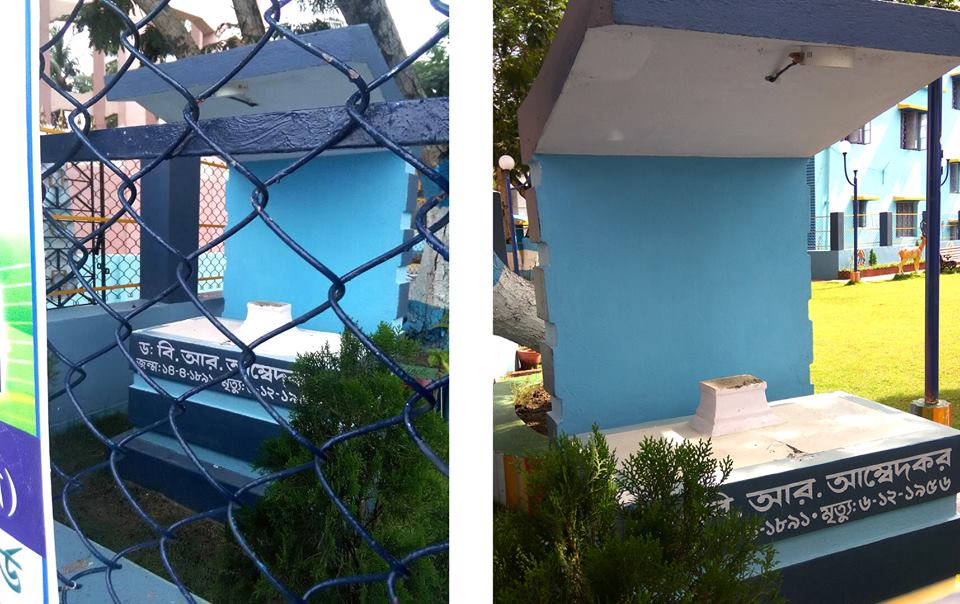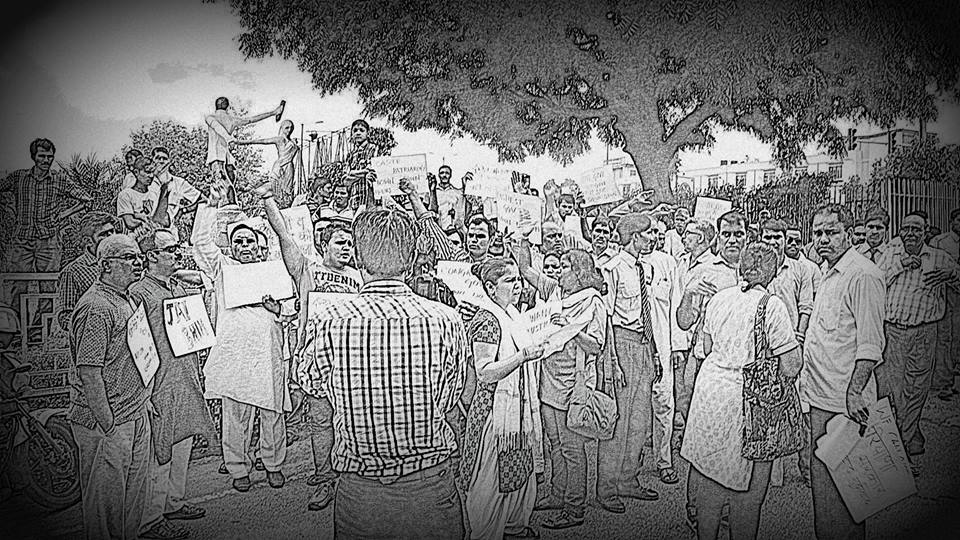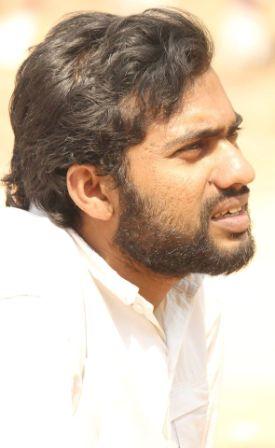Gopika Nangia & Aashish Gupta
It is not a mere coincidence that Narendra Modi had labelled his tour across the state of Gujarat “Vivekananda Yatra”. In a context where Vivekananda has been posited as a “leader of the youth”, it is pertinent to remember the principles the man stood by – casteism, racism, slavery, patriarchy and xenophobia. He is considered by many as the first Hindutva ideologue. It is no wonder then that the right wing finds Vivekananda so useful in its agenda of “Cultural Nationalism”. At first, we thought we would paraphrase his words to show this, but then we realised that we could not put it better than the man himself did. We have barely scratched the surface of his obnoxious views, and we recommend that you read him, for every paragraph in his writings is a gem of distasteful views.
Vivekananda on Race and Slavery
Vivekananda mourned the abolition of slavery and reminisced about the days when slaves were property.
“The history of the world teaches us that wherever there have been fanatical reforms, the only result has been that they have defeated their ends. No greater upheaval for the establishment of right and liberty can be imagined than the war for the abolition of slavery in America. You all know about it. And what have been its results? The slaves are a hundred times worse off today than they were before the abolition.
Before the abolition, these poor Negroes were the property of somebody, and, as properties, they had to be looked after, so that they might not deteriorate. Today they are the property of nobody.”1
Vivekananda is strikingly similar to Hitler here in his description of the supremacy of the Aryan Race, much before him. The Master Race theory of Aryan supremacy endears the Brahmins and the other fascists to each other.
“The Hindus believe– that is a peculiar belief, I think; and I do not know, I have nothing to say to the contrary, I have not found anything to the contrary-they believe there was only one civilised race: the Aryan. Until he gives his blood, no other race can be civilised. No teaching will do. The Aryan gives his blood to a race, and then it becomes civilised. Teaching alone will not do. He would be an example in your country: would you give your blood to the Negro race? Then he would get higher culture.”2
Vivekananda’s Casteism
Vivekananda claims, among other things, that “Caste is a very good thing. Caste is the plan we want to follow.”3 Further on,
“To the non-Brahmin castes I say, wait, be not in a hurry. Do not seize every opportunity of fighting the Brahmin, because, as I have shown, you are suffering from your own fault. Who told you to neglect spirituality and Sanskrit learning? What have you been doing all this time? Why have you been indifferent? Why do you now fret and fume because somebody else had more brains, more energy, more pluck and go, than you? Instead of wasting your energies in vain discussions and quarrels in the newspapers, instead of fighting and quarrelling in your own homes — which is sinful — use all your energies in acquiring the culture which the Brahmin has, and the thing is done. Why do you not become Sanskrit scholars? Why do you not spend millions to bring Sanskrit education to all the castes of India? That is the question. The moment you do these things, you are equal to the Brahmin. That is the secret of power in India.”4
Yes, Vivekananda is against anyone fighting casteism, because fighting casteism is fighting against Brahmins, who are, of course, according to him, Gods on earth.
“This Brahmin, the man of God, he who has known Brahman, the ideal man, the perfect man, must remain; he must not go.”5
Dalits and Shudras, in Vivekananda’s opinion, do no work. The fields plough themselves, by magic.
“In India, even the lowest caste never does any hard work. They generally have an easy lot compared to the same class in other nations; and as to ploughing, they never do it.”6
Why is India not a superpower? Of course, because we “abolished caste”:
“Then what was the cause of India’s downfall? — The giving up of this idea of caste. As Gitâ says, with the extinction of caste the world will be destroyed. Now does it seem true that with the stoppage of these variations the world will be destroyed…Therefore what I have to tell you, my countrymen, is this: that India fell because you prevented and abolished caste… Let Jati have its sway; break down every barrier in the way of caste, and we shall rise.”7
Not only this. Vivekananda is a defender of Manu, the “great” law-giver, and blames the lower castes for their sorry lot. Is it surprising that most of the followers of the cult of Vivekananda are high caste Hindus?
“As Manu says, all these privileges and honours are given to the Brahmin, because “with him is the treasury of virtue”. He must open that treasury and distribute its valuables to the world. It is true that he was the earliest preacher to the Indian races, he was the first to renounce everything in order to attain to the higher realisation of life before others could reach to the idea. It was not his fault that he marched ahead of the other caste. Why did not the other castes so understand and do as he did? Why did they sit down and be lazy, and let the Brahmins win the race?”8
The Pro-Hindutva Vivekananda
As we already said, Vivekananda was probably the first person to make the modern case for Hindutva. And oh, he was quite eloquent in that. Everything melts away in the face of Hinduism, if we go by Vivekananda, including other religions.
“The unity in religion, therefore, is absolutely necessary as the first condition of the future of India. There must be the recognition of one religion throughout the length and breadth of this land.”9
Also, you have no choice but to believe in Vivekananda’s one religion. Otherwise, you’d be smashed.
“We have seen that our vigour, our strength, nay, our national life is in our religion. I am not going to discuss now whether it is right or not, whether it is correct or not, whether it is beneficial or not in the long run, to have this vitality in religion, but for good or evil it is there; you cannot get out of it, you have it now and for ever, and you have to stand by it, even if you have not the same faith that I have in our religion. You are bound by it, and if you give it up, you are smashed to pieces.”10
Patriarchy
The problem with colonialism, according to the misogynistic Vivekanada, is essentially that it makes us all women.
“There is yet another defect in us. Ladies, excuse me, but through centuries of slavery, we have become like a nation of women. You scarcely can get three women together for five minutes in this country or any other country, but they quarrel. Women make big societies in European countries, and make tremendous declarations of women’s power and so on; then they quarrel, and some man comes and rules them all. All over the world they still require some man to rule them. We are like them. Women we are. If a woman comes to lead women, they all begin immediately to criticise her, tear her to pieces, and make her sit down. If a man comes and gives them a little harsh treatment, scolds them now and then, it is all right, they have been used to that sort of mesmerism”11
To his disciples, Vivekananda said,
“So long as you shriek at the missionary attempts and jump without being able to do anything, I laugh at you; you are little dollies, that is what you are… I know, my son, I shall have to come and manufacture men out of you. I know that India is only inhabited by women and eunuchs.”12
Vivekananda denied the sorry state of widows in India. How could he accept that there was anything wrong with India in front of his international audiences?
“A large part of the property in the country is held by widows. In fact, so enviable is the position of widows that a woman or a man either might almost pray to be made a widow.”13
And his long lasting concern was not women’s rights, but maintaining their chastity and “purity”
“I should very much like our women to have your intellectuality, but not if it must be at the cost of purity”14
In many ways, one has to be thankful to the people who have fought and are fighting caste and patriarchy. Otherwise, people like Vivekananda would lead our country to being that much more oppressive.
~
Notes
1. Swami Vivekananda, in “My Plan of Campaign”, Delivered at Victoria Hall, Madras, in “Lectures from Colombo to Almora”, Complete Works of Swami Vivekananda, Volume 3, available at http://en.wikisource.org/wiki/The_Complete_Works_of_Swami_Vivekananda/Volume_3/Lectures_from_Colombo_to_Almora/My_Plan_of_Campaign
2. Swami Vivekananda, in “Buddhistic India”, Delivered at the Shakespeare Club, Pasadena, California, on February 2, 1900, in Complete Works of Swami Vivekananda, Volume 4, available at http://en.wikisource.org/wiki/The_Complete_Works_of_Swami_Vivekananda/Volume_3/Buddhistic_India
3. Swami Vivekananda, “The Abroad and the Problems at Home”, The Hindu, Madras, February 1987, in “Interviews”, The Complete Works of Swami Vivekananda, Volume 5, available at http://en.wikisource.org/wiki/The_Complete_Works_of_Swami_Vivekananda/Volume_5/Interviews/The_Abroad_And_The_Problems_At_Home
4. Swami Vivekananda, in “The Future of India”, Delivered at Victoria Hall, Madras, in “Lectures from Colombo to Almora”, Complete Works of Swami Vivekananda, Volume 3, available at http://en.wikisource.org/wiki/The_Complete_Works_of_Swami_Vivekananda/Volume_3/Lectures_from_Colombo_to_Almora/The_Future_of_India
5. (ibid.)
6. Swami Vivekananda, in “Women of India”, Delivered at the Shakespeare Club House, in Pasadena, California, on January 18, 1900, in “Lectures and Discourses”, Complete Works of Swami Vivekananda, Volume 8 available at http://www.ramakrishnavivekananda.info/vivekananda/volume_8/lectures_and_discourses/women_of_india.htm
7. Swami Vivekananda, in “A Plan of Work for India”, in “Writings: Prose”, The Complete Works of Swami Vivekananda, Volume 4 available at http://en.wikisource.org/wiki/The_Complete_Works_of_Swami_Vivekananda/Volume_4/Writings:_Prose/A_Plan_of_Work_for_India
8. Swami Vivekananda, in “The Future of India”, Delivered at Victoria Hall, Madras, in “Lectures from Colombo to Almora”, Complete Works of Swami Vivekananda, Volume 3, available at http://en.wikisource.org/wiki/The_Complete_Works_of_Swami_Vivekananda/Volume_3/Lectures_from_Colombo_to_Almora/The_Future_of_India
9. Ibid.
10. Ibid.
11. Ibid.
12. Swami Vivekananda, in “Letter to Alasinga”, USA, 1st July 1895, in Complete Works of Swami Vivekananda, Volume 5 available at http://www.ramakrishnavivekananda.info/vivekananda/volume_5/epistles_first_series/043_alasinga.htm
13. Lecture notes of a Lecture by Swami Vivekananda, on “The People of India”, in Oakland, in Complete Works of Swami Vivekananda, Volume 8, available at http://www.vivekananda.net/ByTopic/Vol8/Notes/19_PeopleOfIndia.html
14. Swami Vivekananda, in “Sayings and Utterances”, Complete Works of Swami Vivekananda, Volume 5, available at http://en.wikisource.org/wiki/The_Complete_Works_of_Swami_Vivekananda/Volume_5/Sayings_and_Utterances
~~~










